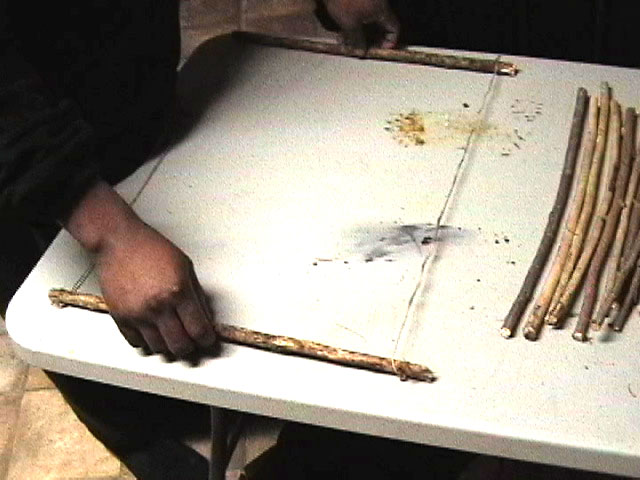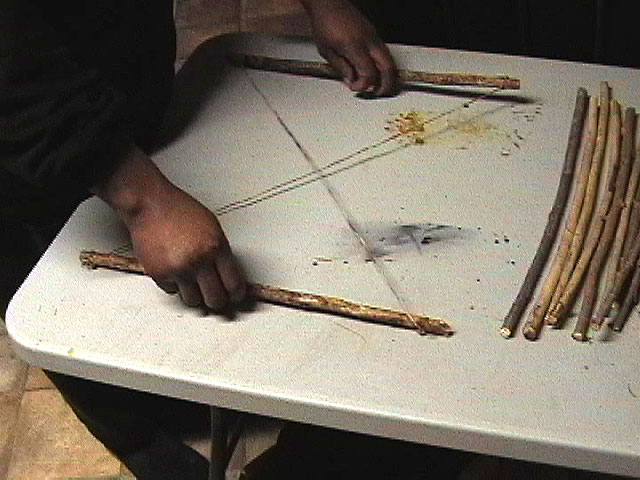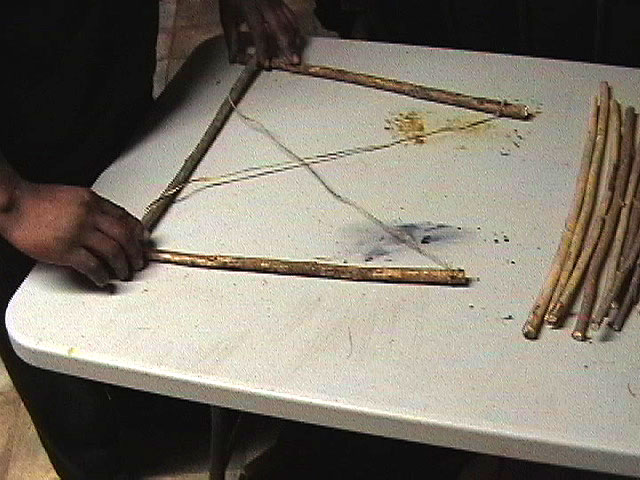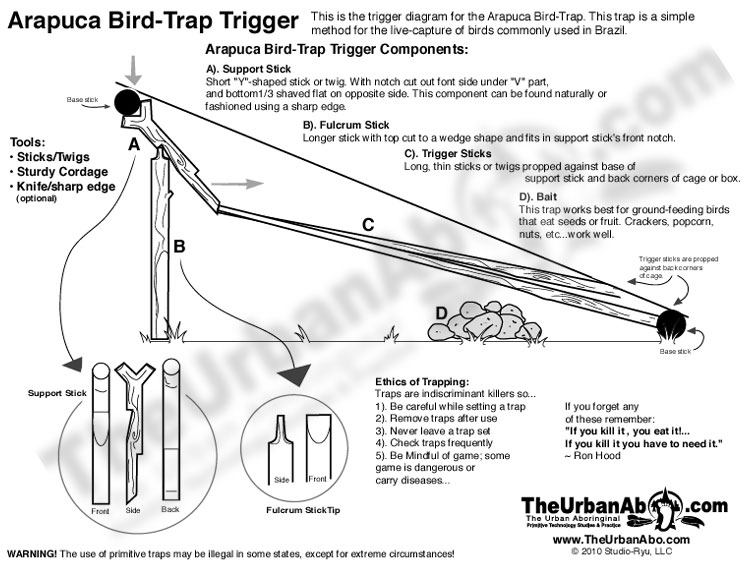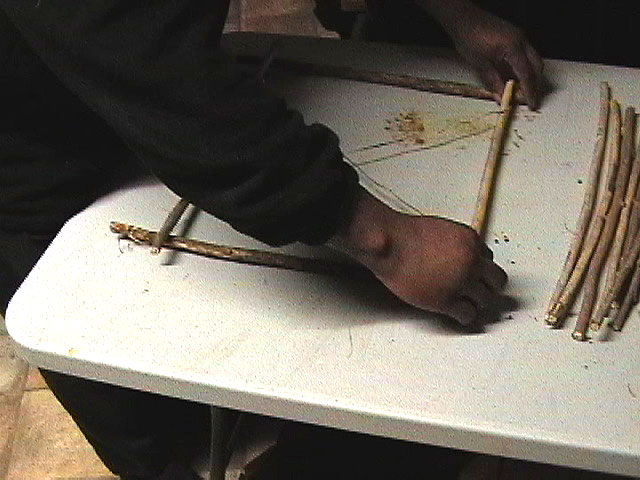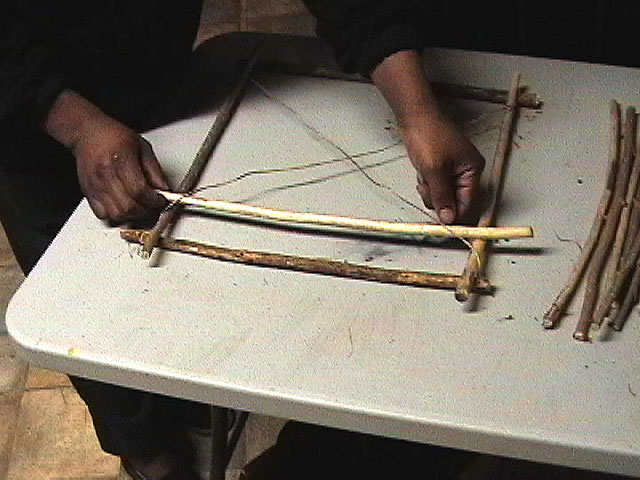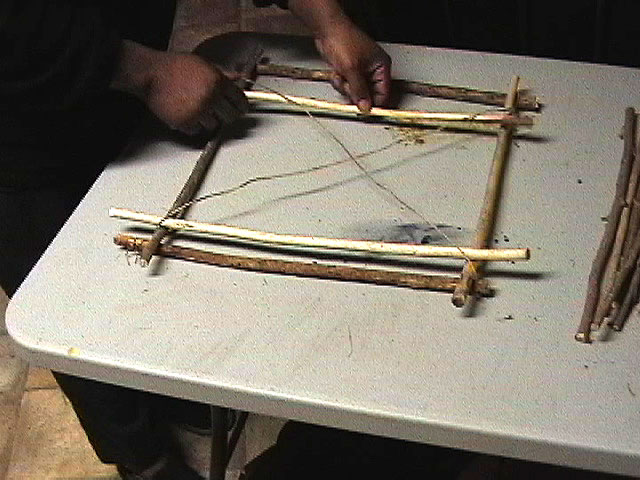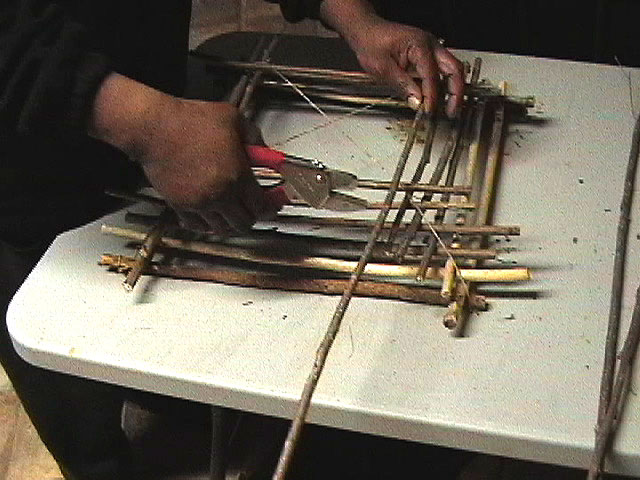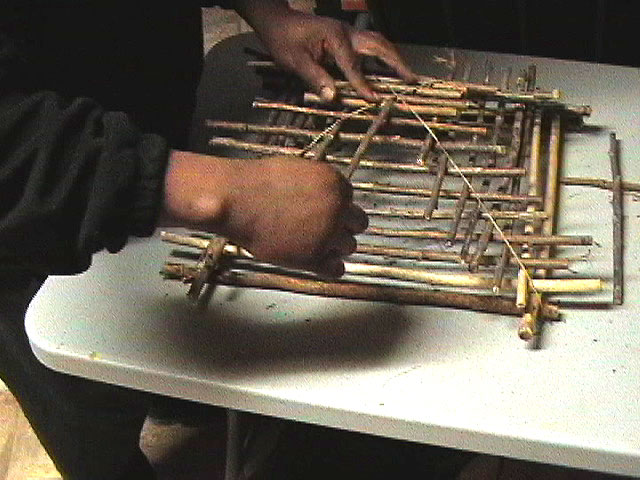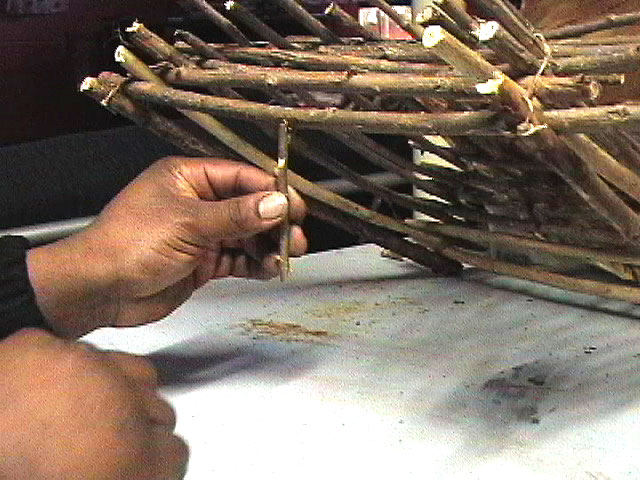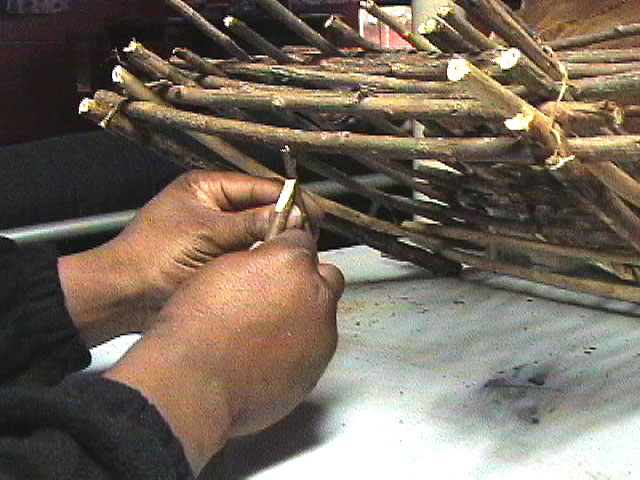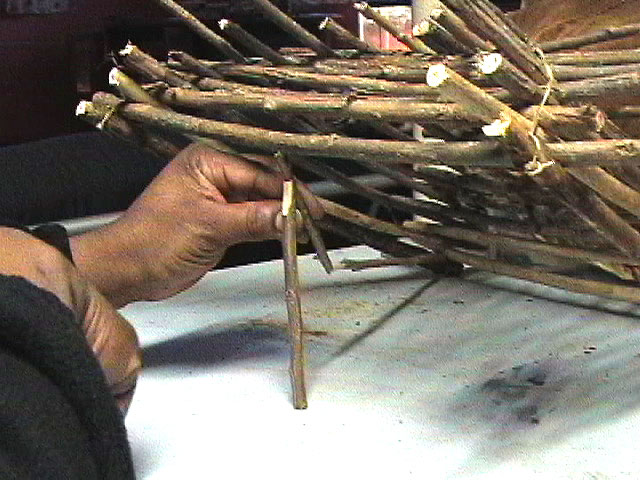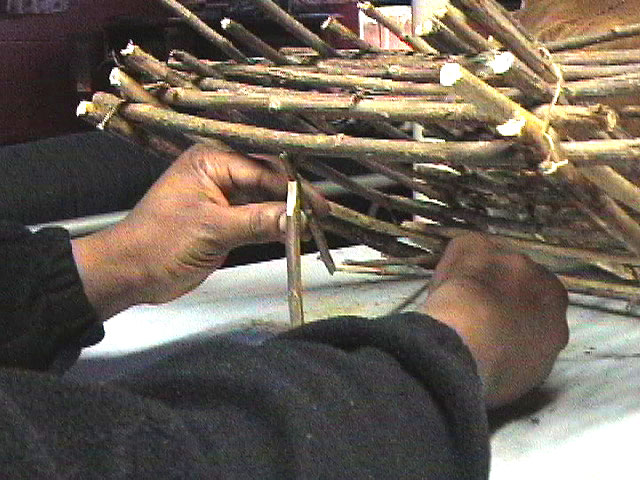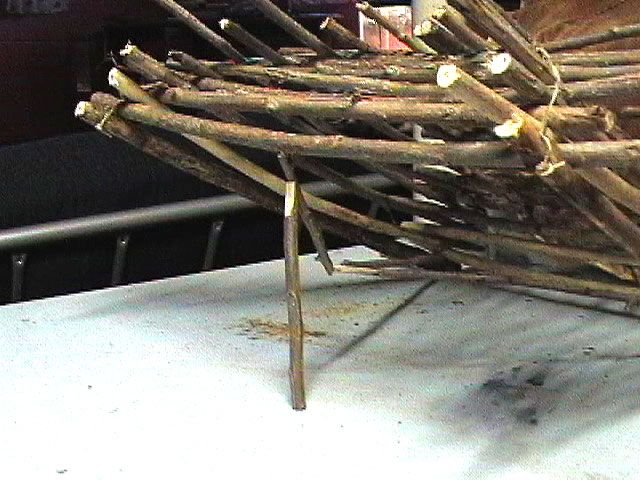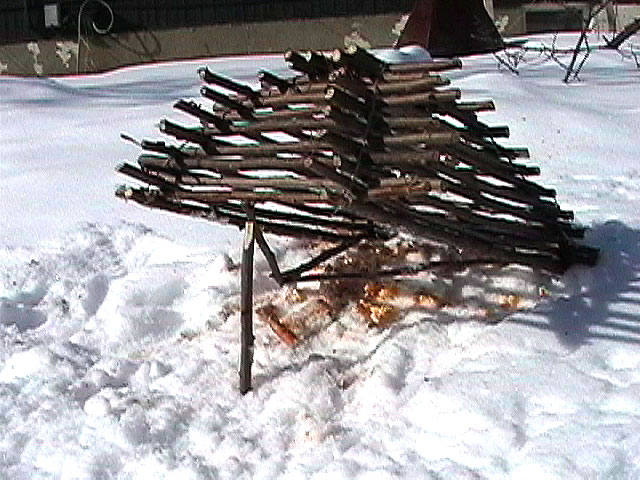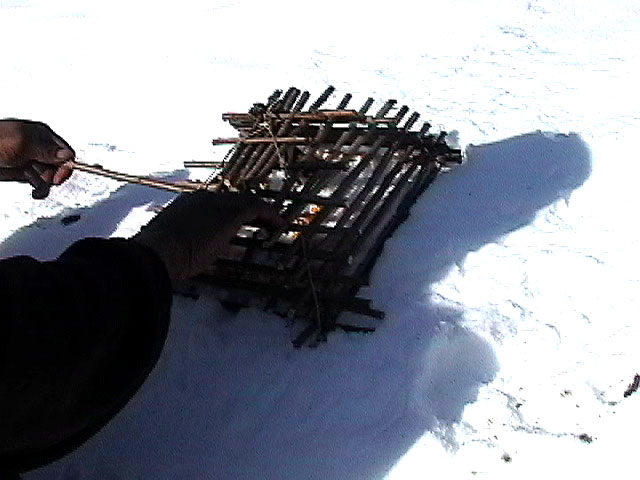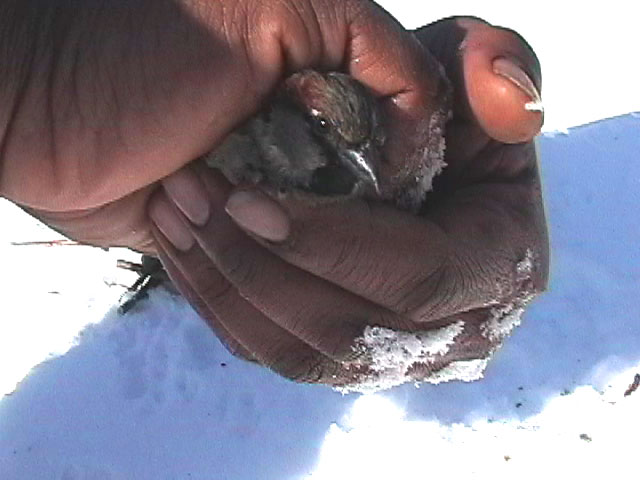How to: Make an Arapuca Bird-Trap
Share
Video
The Arapuca Bird-Trap is a simple method for the live-capture of birds. It is commonly used in Brazil to catch birds for food or pets. This trap is normally used for ground feeding birds that eat seeds or fruit.
It is easy to construct and only really requires bait, sturdy cordage, and relatively straight sticks. Trapping is a numbers game, so a common tactic, especially with this type of trap is to set several traps propped up but not armed allowing the birds to get accustomed to feeding under them and leaving.
Traps work if you have studied your quarry's habits and preferred bait. Trapping is a good exercise in observation, awareness, and patience.
top↟
Show more > >
Instructions
1). To begin to make the cage for your Arapuca Bird-Trap tie two base-sticks with two pieces of sturdy cordage (paracord, shoelace, ripped-clothing, buckskin, ect…), here I am using buckskin.
For this trap the base-sticks are starting at approx. 17.5" long and the cordage is approx. 22" long.
2). Twist the sticks so that the cordage forms an “X” in the center.
The length of the cordage should be the length of the sticks plus a couple of inches, so that it is easy to twist.
3). Place your first set of sticks underneath the cordage perpendicular to the first base-sticks...
4). Here the sticks have the bark stripped, but it is better to leave the bark on. This keeps the sticks from slipping; the bark provides better grip.
5). Continue to stack the sticks underneath the cordage Lincoln-Log style, alternating sides with each pair of sticks
6). As you stack the cordage will become taunt and start to hold the frame together...
7). Although not necessary, you can trim the sticks as you stack with a sharp knife, or rock. Here, I am using pruning snips for speed
8). Once you reach the top and/or the cordage starts to become too tight, begin to close off the opening with parallel sticks then lock down with one or two perpendicular sticks to top of the cage.
9). The trigger mechanism consists of:
1). Support stick
2). Fulcrum stick
3). And two trigger sticks
Click here to download trigger diagram >>
First prop up the cage with using the "Y" of the support stick...
10). Then place the fulcrum stick in the notch of the support stick...
11). Next, take one of the trigger sticks and balance one end of the stick against one corner of the cage and the tip of the support stick...
12). Then do the same with the other trigger stick propping it against the opposite corner of the cage.
13). The trap is now set. When the quarry knocks or moves one of the trigger sticks it causes the cage to collapse capturing it.
14). Here I have placed the bait in the "V" at the back of the trap between the trigger sticks.
15). The is trap is very effective provided the size of the sticks is relative to the size of the bird you are after. Here the trap was triggered with bait of popcorn where sparrows normally feed in my backyard.
When the trap is triggered and you have caught a bird, to get at it do not lift up the cage simply slide out one of the sticks of the frame so that you can slide your hand in to retrieve your quarry.
16). The nice thing about the Arapuca Trap is that you can practice without harming game unlike many other traps.
This is a young male sparrow a little shaken but unharmed.
He was not hurt and was set free.
top↟
